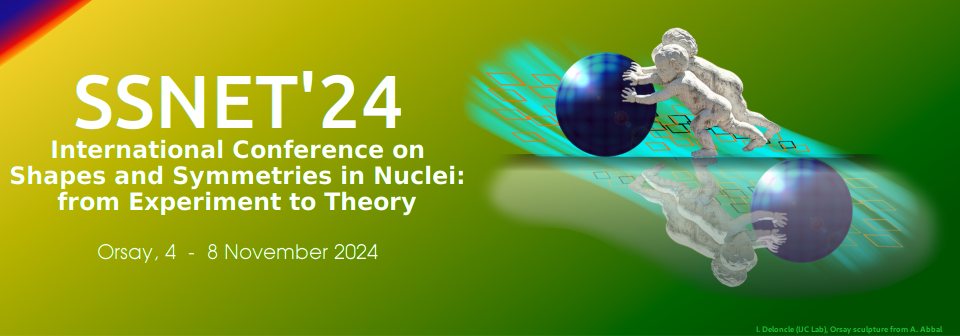Orateur
Description
Pairing in atomic nuclei reveals profound insights into the intrinsic behavior and properties of nuclear systems [1]. Numerous theories have arisen in the exploration of this field, with particular significance attributed to the BCS theory [2]. Extending the boundaries of this theory, the Finite Temperature BCS (FTBCS) theory, with the inclusion of angular momentum [3], has emerged as an important framework for understanding the properties of atomic nuclei [4]. Lately, there has been a notable emphasis on the integration of quasi-particle number fluctuations into the FTBCS theory (FTBCS1) [5].
This study focuses on the Dysprosium (Dy) nucleus, employing the FTBCS1 model to investigate the impact of quasi-particle number fluctuations on pairing gaps, heat capacity, entropy, and level density. Contrary to the expectations from FTBCS theory, the findings reveal that the gap parameter, instead of vanishing at a specific temperature, experiences a gradual reduction, maintaining a finite value. Similar effects are observed in entropy and heat capacity plots, which can be attributed to quasi-particle number fluctuations. Notably, a smooth super-fluid to normal phase transition is observed in FTBCSemphasized text1, a phenomenon absent in traditional FTBCS theory.
References
[1] T. Vu Dong et.al, Phys. Rev. C 107 (2023) 064319.
[2] Z. Kargar, Phys. Rev. C 75 (2007) 064317.
[3] L. G. Moretto, Nucl. Phys. A 185 (1972) 145-165.
[4] N. Q. Hung and N. D. Dang, Phys. Rev. C 78 (2008) 064315.
[5] N. Q. Hung and N. D. Dang, Phys. Rev. C 84 (2011) 054324.

